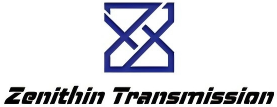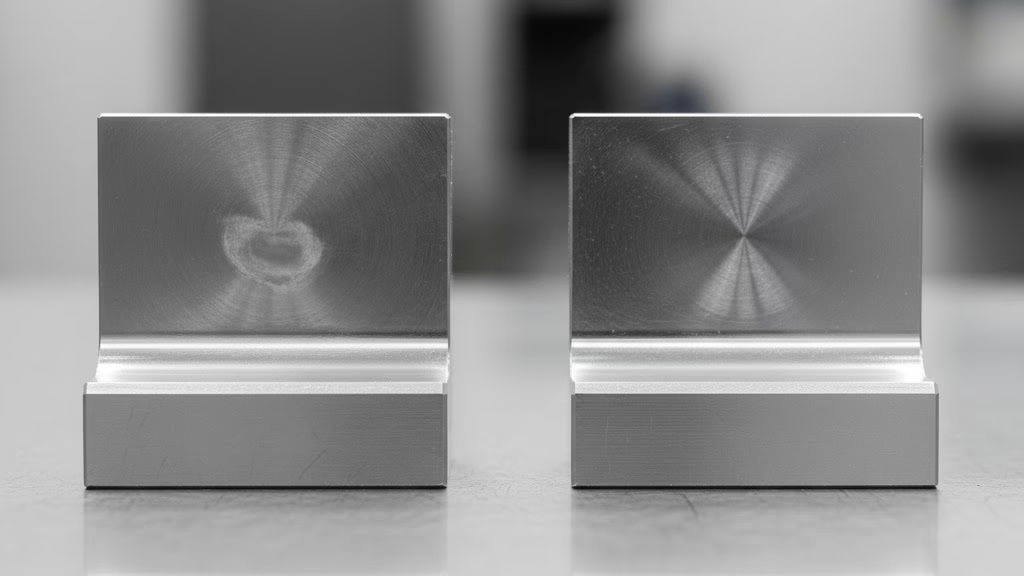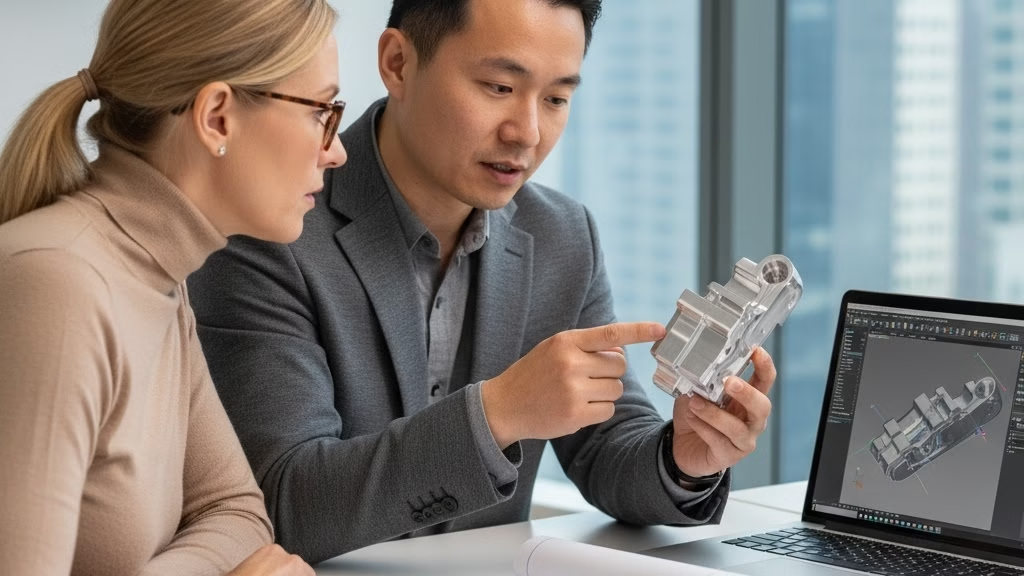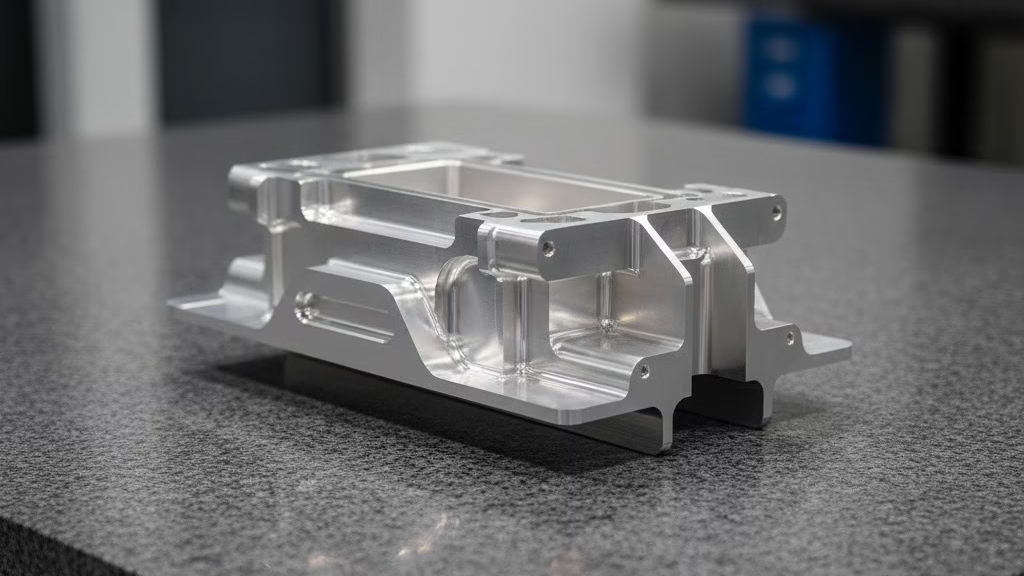Confused by a high prototype quote? This guide explains the hidden economics of manufacturing, showing you exactly why your per-part price drops dramatically as you scale from a single unit to mass production.
We’ll give you the framework to control costs and make smarter decisions.
The significant cost difference between a prototype and a production part stems from high, one-time Non-Recurring Engineering (NRE) fees. These fixed costs, which include programming, tooling, and setup, are fully loaded onto the first few parts, making them expensive. In mass production, these NRE costs are amortized over thousands of units, drastically reducing the per-part price.
Now that you know the “what,” read on to discover the strategic steps you can take to manage these costs and plan a successful, cost-effective transition from prototype to production.
Understanding the Price: Why the First Part Costs the Most
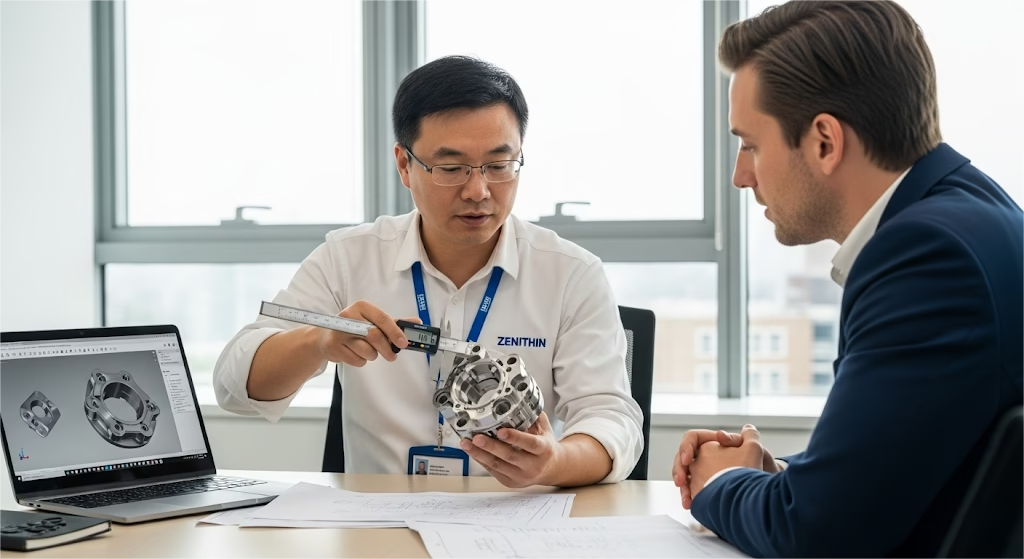
So, where does that high number come from?
It’s not the material, and it’s not just the time the machine is running.
The price of your first part is dominated by something called Non-Recurring Engineering costs, or NRE.
Think of NRE as all the one-time prep work needed to get your project started. It’s an investment that unlocks the entire manufacturing run.
This is the simple formula at play:
- Total Cost = Fixed Costs (NRE) + (Variable Cost Per Part x Quantity)
For an engineer, NRE includes the detailed work of CAM programming, designing custom fixtures to hold the part, and the careful process of machine setup and first-article inspection.
For a manager, it’s easier to think of it as the project’s setup fee. This fixed cost is the main reason a single part seems expensive.
But as you produce more parts, that initial investment gets spread thinner and thinner, drastically lowering your per-part price.
This initial expense is better viewed as an insurance policy than a simple cost.
As Lean Startup pioneer Eric Ries argues, a prototype isn’t just a mini-product; it’s an experiment that produces validated learning. Spending money now to find a design flaw is infinitely cheaper than discovering it after production has started.
According to the classic “Rule of 10,” a flaw that costs $1 to fix in the design phase could cost $10 to fix in prototyping, $100 in production, and a catastrophic $1000 or more if it reaches your customers.
That high prototype price is your shield against those much larger future costs.
Your Strategic Blueprint: Planning Your Cost Roadmap from 1 to 10,000+
Understanding the “why” behind the cost is one thing; actively managing it is another.
Your journey from a single prototype to mass production isn’t a single path. It’s a strategic map with different routes, and choosing the right one at the right time is key to controlling your budget.
Step 1: Choose the Right “Track” — The Manufacturing Process Map
The price curve for your part is directly tied to the manufacturing process you choose.
A method that is perfect for 10 units can become financially ruinous at 10,000.
Here’s a simple breakdown of the economic sweet spots for common processes:
| Production Volume | Primary Use Case | Recommended Processes |
|---|---|---|
| 1-10 Units | Prototyping | 3D Printing (SLA/SLS), CNC Machining |
| 50-5,000 Units | Low-Volume Production | CNC Machining, Urethane Casting, Bridge Tooling |
| 5,000+ Units | Mass Production | Injection Molding (Hard Tooling) |
Choosing a partner who understands these transitions is vital. They won’t just give you a price; they’ll give you a roadmap.
Step 2: Activate the “Leverage Effect” — DFM is Your Highest ROI Investment
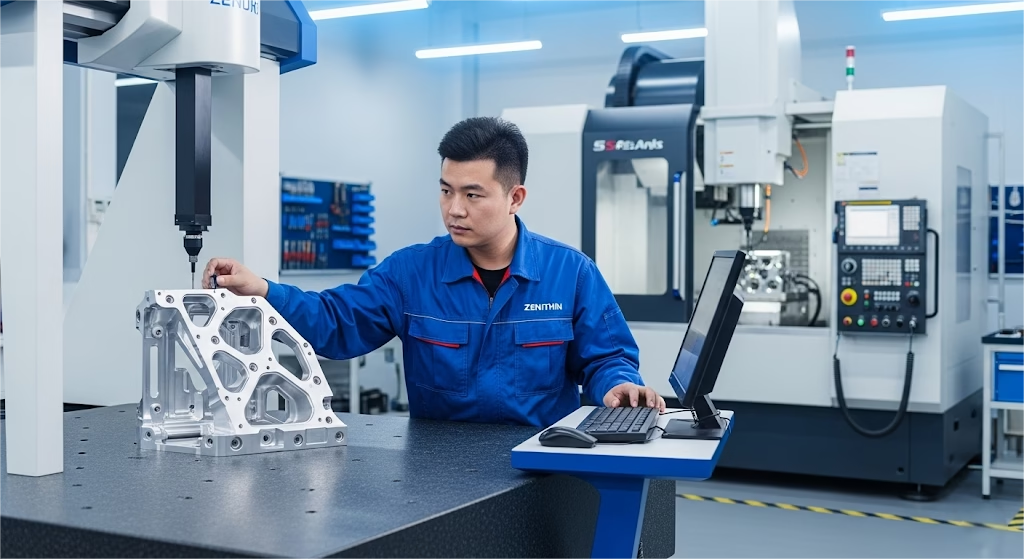
The most important bridge between an expensive prototype and a cost-effective production part is Design for Manufacturability (DFM).
This is a collaborative review process where your manufacturing partner analyzes your design to identify features that could make it difficult or expensive to produce at scale.
Ignoring DFM is a common and costly mistake.
We once worked with a startup that rushed a “perfect” prototype into production, only to find their $50,000 mold produced warped parts because of inconsistent wall thickness—a classic DFM issue.
The redesign and mold modifications cost them an extra $20,000 and a three-month delay.
As Scott Miller, founder of Dragon Innovation, warns, “The biggest mistake we see is people designing a product that is really a ‘looks-like, works-like’ prototype, but it’s not designed for manufacturing… The cost to fix a DFM issue once you’ve cut steel for a tool is astronomical compared to fixing it in CAD during the prototyping phase.”
It’s about making small, free changes in a digital file to save tens of thousands of dollars on physical tooling later.
Ready to Plan Your Production Run?
Our CNC Milling Services include a full DFM review to help you optimize your design for cost-effective manufacturing, from a single prototype to thousands of parts.
Practical Application: How to Request a Quote and Make Decisions Like an Expert
Now that you understand the strategy, it’s time to put it into action.
How you communicate with potential suppliers determines the quality of the quotes you receive and the ultimate success of your project.
It’s time to move from a simple price request to a strategic partnership evaluation.
Asking for a “Smart” RFQ: Go Beyond a Single Number
A professional buyer never asks for just one price. To truly understand a supplier’s capabilities, you need to see the full picture.
Instead of asking, “How much for one part?” ask for a tiered pricing quote.
Specifically, request pricing for quantities like:
- 1 piece (Prototype)
- 50 pieces (Pilot Run)
- 500 pieces (Low-Volume)
- 5,000+ pieces (Production)
This single request reveals volumes about their cost structure, their preferred production methods, and their ability to scale with you.
A supplier who can only provide a prototype price is telling you they aren’t equipped for production. Furthermore, a quote is more than a price.
It’s an opportunity to vet a potential partner. One of the biggest mistakes is receiving a “silent prototype”—a part that perfectly matches your CAD file but teaches you nothing about its manufacturability.
The most valuable prototypes are “talkative.” They come with feedback.
Before you even agree to a quote, ask these critical questions:
- Can you provide a DFM analysis report with this quote?
- What is your recommended manufacturing path from 1 to 10,000 units for this part?
- Please break down the NRE costs versus the per-part cost.
- What are the lead times for both the prototype and a production run of 500?
A top-tier partner will welcome these questions. Their answers will transform a simple price sheet into a strategic document.
This is because a professional quote isn’t the end of a negotiation; it’s the beginning of a strategic dialogue about your product’s future.
Beyond the Basics: Are You Paying for the Wrong Answers?
One of the most common ways to overspend on development is to ask for “a prototype” without defining what that really means.
The word itself is too vague. A great manufacturing partner knows that different prototypes are built to answer different questions, and each comes with a very different price tag.
Before you send out an RFQ, ask yourself: What is the single most important question this physical part needs to answer right now?
- Is it an appearance model for a tradeshow or investor pitch? A beautifully finished looks-like prototype made with SLA 3D printing is often the fastest, most cost-effective option. Don’t pay for expensive CNC machining if you only need to validate the aesthetics.
- Do you need to test the strength, assembly, and function? Then you need a works-like prototype, likely CNC machined from a production-grade material. This is more expensive, but necessary to get reliable engineering data.
- Are you testing the manufacturing process itself? For high-volume products, a production-intent prototype using soft tooling (like an aluminum mold) can be the smartest investment of all. It costs more upfront but de-risks your much larger investment in steel production tooling.
Matching the prototype’s fidelity to the question you need answered is the key to capital efficiency.
Don’t pay for a works-like prototype when a looks-like model will do. A strategic partner will help you clarify this purpose, ensuring you only pay for the answers you actually need.
Conclusion: Stop Buying Parts, Start Building Your Manufacturing Strategy
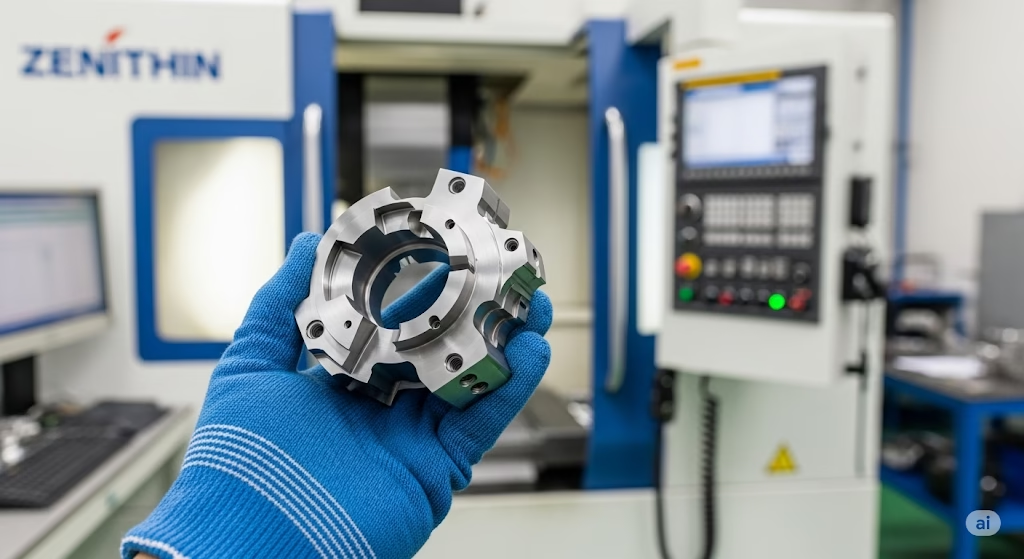
So, that $800 quote? It was never just about one part. It was an invitation to think bigger.
It was your project’s first opportunity to move from simply buying a component to building a robust manufacturing strategy.
The true cost of a part isn’t what you pay for the prototype; it’s the total cost of bringing a reliable product to market. By now, you’ve seen that the path from Prototype vs. Production is a journey of strategic decisions, not just price points.
Here are the key takeaways to guide you:
- Embrace the NRE: View high prototype costs not as an expense, but as a crucial, one-time investment in de-risking your entire project.
- Plan Your Path: Use the manufacturing map to choose the right process for your current volume, and always have an eye on the next stage.
- Leverage DFM: Make Design for Manufacturability a non-negotiable step. Small tweaks in CAD save enormous sums on physical tooling.
- Ask Smarter Questions: Request tiered pricing and ask probing questions to turn a simple quote into a deep evaluation of a potential partner.
Ultimately, the goal is to find a manufacturing partner who does more than just cut metal or mold plastic.
You need a partner who will challenge your design, guide your strategy, and provide a clear, actionable roadmap from that first expensive part to the ten-thousandth affordable one.
This strategic approach is what turns a great idea into a great, profitable product.
Ready to stop buying parts and start building your strategy? Upload your design, and let’s begin a conversation about your product’s future. We’ll provide a free DFM analysis and a strategic manufacturing assessment to get you started on the right path.
